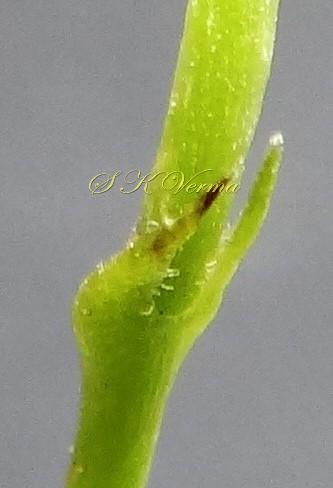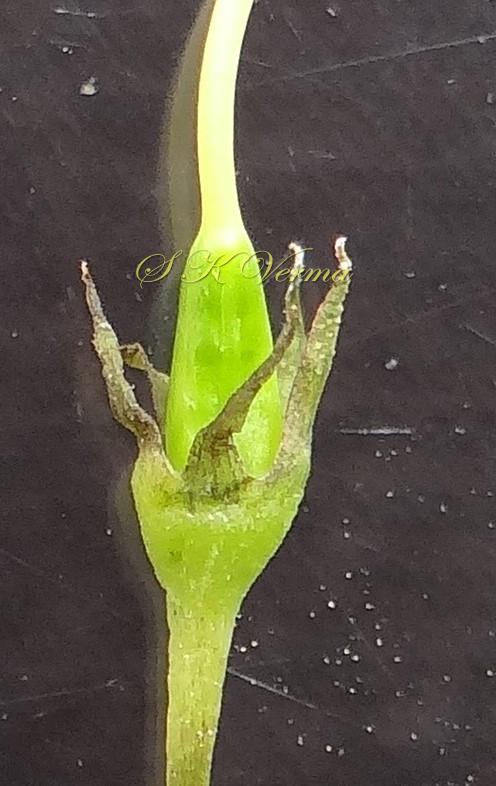RUTTYA
Ruttya
Harv., London J. Bot. 1: 27. 1842; Darbyshire et al., Flora Zambesiaca Acanthaceae (part 2).
Shrubs or shrubby herbs, cystoliths conspicuous, linear. Stem erect, terete. Leaves opposite, simple. Inflorescence few-flowered to long many-flowered racemoid cymes. Bracteoles present, triangular. Flowers zygomorphic, bisexual, hypogynous. Sepals 5, connate at base, lobes equal, subulate to narrowly triangular. Corolla 2-lipped, glabrous on outside; basal tube short and wide, widening slightly into a short throat; lobes 5, upper lip 2-lobed, erect, forming a hood, lower lip of 3 lobes, strongly deflexed against corolla tube. Stamens 2; filaments attached near base of upper lip and held under it; filaments glabrous, terete to flattened and winged; anthers bithecous, ellipsoid to oblong, straight or curved, with a short spur or mucronate to rounded at base, glabrous; staminodes 2, minute to long. Carpels 2, syncarpous; ovary 2-locular with 2 ovules per loculus; style glabrous; stigma of 2 equal, erect, broadly ellipsoid lobes. Fruit a 4-seeded capsule, clavate with contracted stalk-like basal part, glabrous; seed bearing part ellipsoid, laterally flattened; retinacula strong, hooked. Seeds discoid, smooth on both sides, with a broad longitudinal ridge on outer side.
6 species
Ruttya fruticosa
Ruttya fruticosa
Lindau, Bot. Jahrb. Syst. 20: 45. 1894; Darbyshire et al. Fl.Zambesiaca @ World Flora online.
Perennial shrub, up to 3 m tall. Cystoliths present. Stem erect, weak, branched, terete, glabrous, twigs pendent. Leaves opposite, unequal, simple, subsessile, ovate to elliptic, 3-10 cm x 1-4 cm, margin entire, apex acute, base attenuate, puberulous on both surfaces, especially on veins; lateral nerves 2-3 pairs. Inflorescence 4-8-flowered axillary or terminal dichasial cymes; bracts linear, foliaceous; bracteoles more or less narrowly triangular, minute. Flowers bisexual, zygomorphic, hypogynous. Sepals 5, connate at base, 3-6 mm long, lobes narrowly triangular to linear-lanceolate. Corolla orange-red; tube 1.2-1.5 cm long; limb 2-lipped, upper lip ca. 2 cm x 1.3 cm, 2-lobed, lobes erect, ca. 1 cm x 0.7 cm; lower lip 3-lobed, strongly deflexed against the tube, lobes 1.7-2.5 cm x 1-1.3 cm, a large glossy orange-black nectariferous patch at mouth on the base of lower lip. Stamens 2, erect; filaments ca. 1.8 cm long attached near base of upper lip and held under it, glabrous, terete; anthers ca. 4 mm x 1.2 mm, monothecous, ellipsoid, glabrous, dorsifixed, longitudinal dehiscence; staminodes 2, minute. Carpels 2, syncarpous; ovary clavate with broad basal sterile part, glabrous, ovule bearing part +/- conic, 2-locular with 2 ovules per loculus one above other; style long, ca. 3 cm long, reddish-brown, glabrous; stigma minute.
Fruit not observed.
Common Names: Rabbit Ears, Orange Bird, Hummingbird Plant, Jammy Mouth or Jembekkie
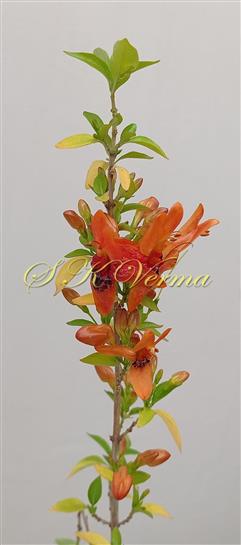
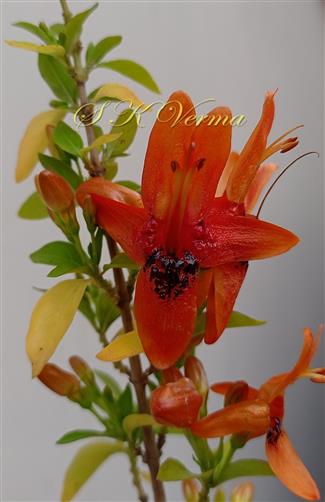
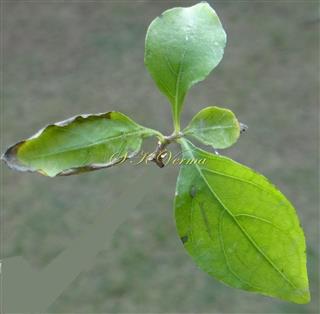
(Adaxial View)-DSC08995.jpg)
-DSC08999.jpg)
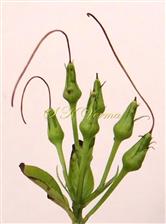
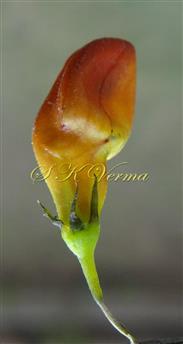

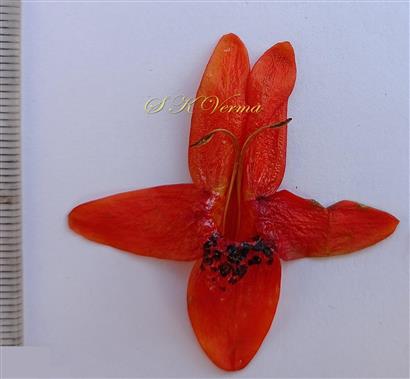
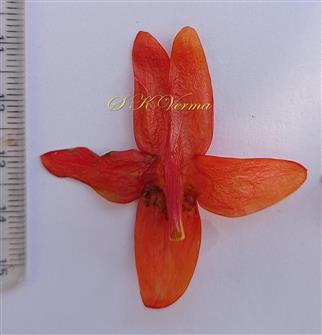
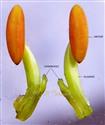
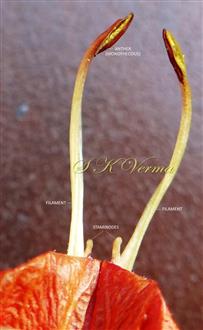
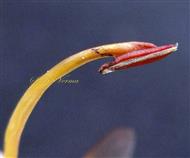
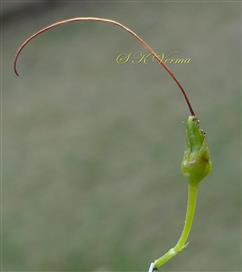






(Adaxial View)-DSC08995.jpg)
-DSC08999.jpg)


